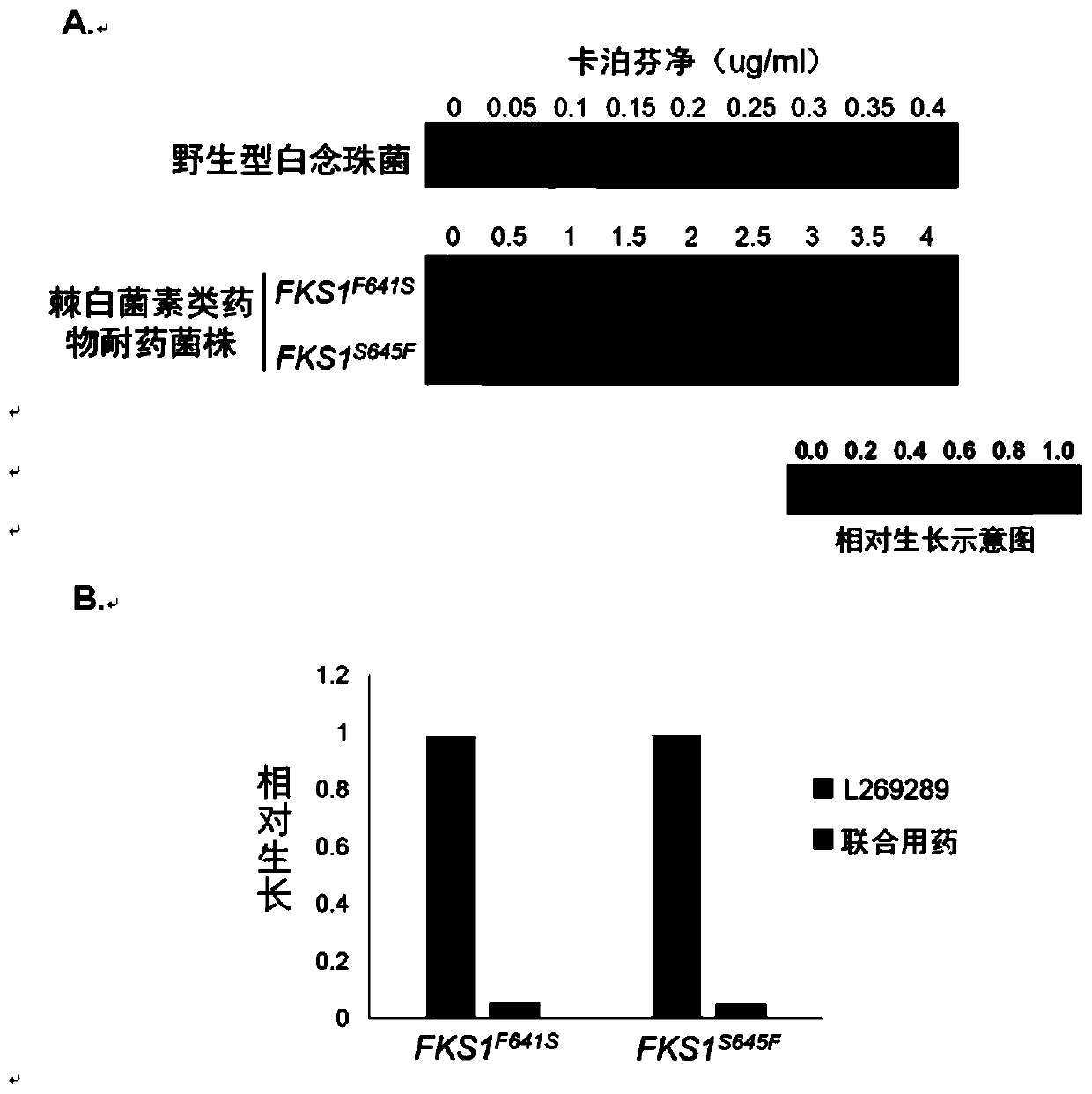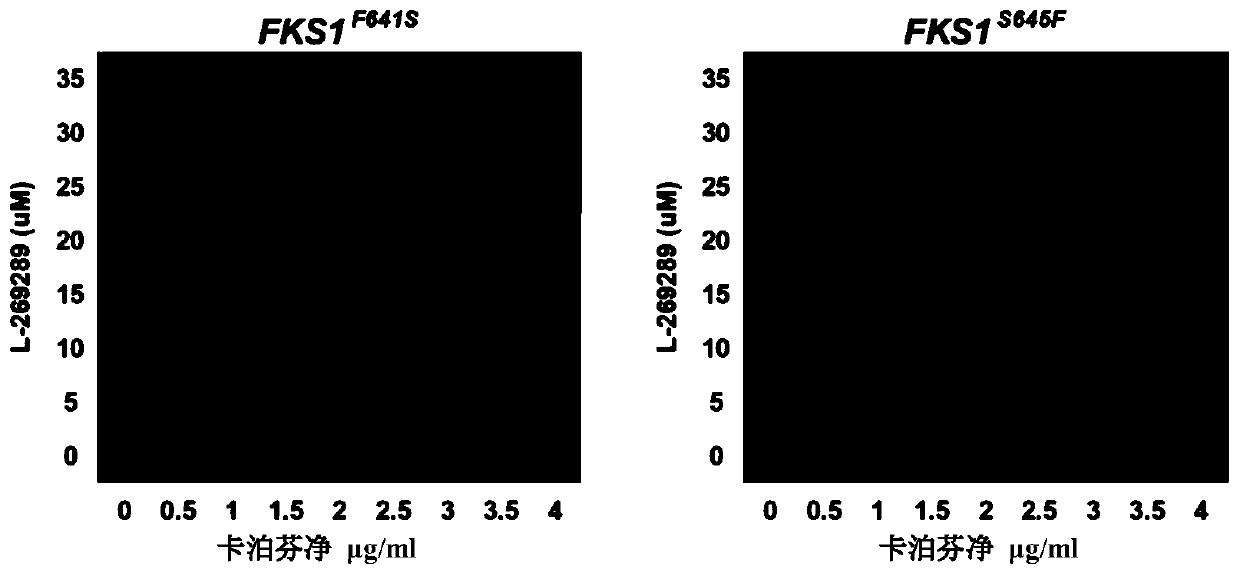Pharmaceutical composition for candida albicans echinocandin drug-resistant bacteria and application of pharmaceutical composition
An echinocandin and Candida albicans technology, which can be used in pharmaceutical formulations, antifungal agents, medical preparations containing active ingredients, etc., can solve problems such as inability to effectively inhibit activity, and achieve the effect of treating invasive infections
- Summary
- Abstract
- Description
- Claims
- Application Information
AI Technical Summary
Benefits of technology
Problems solved by technology
Method used
Image
Examples
Embodiment 1
[0022] The chemical structural formula of caspofungin and compound L-269289 is as follows figure 1 As shown, the present embodiment verifies the bactericidal activity of the combined drug to drug-resistant strains through in vitro experiments, and the specific operations are as follows:
[0023] (1) Determination of Candida albicans drug susceptibility test: The determination of Candida albicans drug susceptibility test was completed in a 96-well plate, and 100 ul of yeast extract powder glucose culture solution (YPD) was added to each well. Caspofungin is diluted according to the set concentration (concentration setting see figure 2 A) placed in the well, the designated bacterial strains (wild-type Candida albicans; Candida albicans echinocandin drug-resistant strains, including FKS1 F641S and FKS1 S645F ) was cultured to the logarithmic growth phase, and about 10 3 individual bacteria; measure the strain concentration with a microplate reader after culturing at 30°C in t...
Embodiment 2
[0026] Concentration gradient detection of combined drug: add 100ul of yeast extract powder glucose culture solution (YPD) to each well of 96-well plate, caspofungin and compound L-269289 are diluted according to the set concentration (concentration setting see image 3 ) was placed in the well, and the echinocandin drug-resistant strains of Candida albicans (including FKS1 F641S and FKS1 S645F ) was cultured to the logarithmic growth phase, and about 10 3 individual bacteria; measure the strain concentration with a microplate reader after culturing at 30°C in the dark for 48 hours, and the data are represented by a heat map, such as image 3 shown. image 3 The results showed that: caspofungin used alone at a high concentration of 0.5 μg / ml to 4 μg / ml was effective against echinocandin-resistant strains of Candida albicans, including FKS1 F641S and FKS1S645F The inhibitory effect is weak. However, the combined administration of 1.5μg / ml~4μg / ml caspofungin and 25~35uM L-26...
Embodiment 3
[0028] Toxicity verification of compound L-269289 on human kidney cell line 293, including the following operations:
[0029] (1) The human kidney cell line 293 was provided by the China Center for Type Culture Collection (CCTCC), and was negative for mycoplasma contamination by PCR;
[0030] (2) 293 cells at 5.0×10 per well 4 The concentration of each cell was seeded in a 96-well plate, 10% fetal bovine serum (Everygreen) was added, and DMSO (MP Biomedicine) and compound L-269289 were used, and the concentration was set to 10 μM, 20 μM, 30 μM, 40 μM, and 50 μM. After culturing for 72 hours, Cell counting kit 8 (APExBIO) was used to detect the surviving cells after culture, and the survival rate of cells not treated with L-269289 was set as 100% as a control.
[0031] Experimental results such as Figure 4 As shown in (A), Figure 4 (A) The results show that: L-269289 can inhibit the viability of 293 cells only when the concentration is greater than 40 μM.
PUM
 Login to View More
Login to View More Abstract
Description
Claims
Application Information
 Login to View More
Login to View More - R&D
- Intellectual Property
- Life Sciences
- Materials
- Tech Scout
- Unparalleled Data Quality
- Higher Quality Content
- 60% Fewer Hallucinations
Browse by: Latest US Patents, China's latest patents, Technical Efficacy Thesaurus, Application Domain, Technology Topic, Popular Technical Reports.
© 2025 PatSnap. All rights reserved.Legal|Privacy policy|Modern Slavery Act Transparency Statement|Sitemap|About US| Contact US: help@patsnap.com



